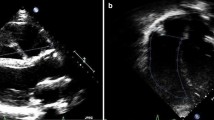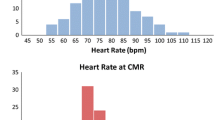Abstract
Adult patients who underwent tetralogy of Fallot repair surgery (rTOF) confront life-threatening ailments due to right ventricular (RV) myocardial dysfunction. Pulmonary valve replacement (PVR) needs to be performed to restore the deteriorating RV function. Determination of correct timing to perform PVR in an rTOF patient remains subjective, due to the unavailability of quantifiable clinical diagnostic parameters. The objective of this study is to evaluate the possibility of using RV body surface area (BSA)-indexed stroke work (SWI) to quantify RV inefficiency in TOF patients. We hypothesized that RV SWI required to push blood to the lungs in rTOF patients is significantly higher than that of normal subjects. Seven patients with rTOF pathophysiology and eight controls with normal RV physiology were registered for this study. Right ventricular volume and pressure were measured using cardiac magnetic resonance imaging and catheterization, respectively. Statistical analysis was performed to quantify the difference in SWI between the RV of the rTOF and control groups. Right ventricular SWI in rTOF patients (0.176 ± 0.055 J/m2) was significantly higher by 93.4% (P = 0.0026) than that of controls (0.091 ± 0.030 J/m2). Further, rTOF patients were found to have significantly higher (P < 0.05) BSA normalized RV end-systolic volume, end-systolic pressure, and regurgitation fraction than control subjects. Ejection fraction and peak ejection rate of rTOF patients were significantly lower (P < 0.05) than those of controls. Patients with rTOF pathophysiology had significantly higher RV SWI compared with subjects with normal RV physiology. Therefore, RV SWI may be useful to quantify RV inefficiency in rTOF patients along with currently used clinical end points such as RV volume, pressure, regurgitation fraction, and ejection fraction.






Similar content being viewed by others
References
Murphy JG, Gersh BJ, Mair DD, Fuster V, McGoon MD, Ilstrup DM, McGoon DC, Kirklin JW, Danielson GK (1993) Long-term outcome in patients undergoing surgical repair of tetralogy of Fallot. N Engl J Med 329:593–599
Pigula FA, Khalil PN, Mayer JE, del Nido PJ, Jonas RA (1999) Repair of tetralogy of Fallot in neonates and young infants. Circulation 100:II157–II161
Yang MC, Chiu SN, Wang JK, Lu CW, Lin MT, Chen CA,Chang CI, Chen YS, Chu IS, Wu MH (2011) Natural and unnatural history of tetralogy of Fallot repaired during adolescence and adulthood. Heart Vessels. doi:10.1007/s00380-011-0119-3
Miyazaki A, Yamamoto M, Sakaguchi H, Tsukano S, Kagisaki K, Suyama K, Ohuchi H, Kurosaki K, Yagihara T, Yamada O (2009) Pulmonary valve replacement in adult patients with a severely dilated right ventricle and refractory arrhythmias after repair of tetralogy of fallot. Circ J 73:2135–2142
Hazekamp MG, Kurvers MM, Schoof PH, Vliegen HW, Mulder BM, Roest AA, Ottenkamp J, Dion RA (2001) Pulmonary valve insertion late after repair of Fallot’s tetralogy. Eur J Cardiothorac Surg 19:667–670
Therrien J, Siu SC, McLaughlin PR, Liu PP, Williams WG, Webb GD (2000) Pulmonary valve replacement in adults late after repair of tetralogy of Fallot: are we operating too late? J Am Coll Cardiol 36:1670–1675
Davlouros PA, Niwa K, Webb G, Gatzoulis MA (2006) The right ventricle in congenital heart disease. Heart 92(Suppl 1): i27–i38
Harrild DM, Berul CI, Cecchin F, Geva T, Gauvreau K, Pigula F, Walsh EP (2009) Pulmonary valve replacement in tetralogy of Fallot: impact on survival and ventricular tachycardia. Circulation 119:445–451
d’Udekem Y, Ovaert C, Grandjean F, Gerin V, Cailteux M, Shango-Lody P, Vliers A, Sluysmans T, Robert A, Rubay J (2000) Tetralogy of Fallot: transannular and right ventricular patching equally affect late functional status. Circulation 102:III116–III122
Fiore AC, Rodefeld M, Turrentine M, Vijay P, Reynolds T, Standeven J, Hill K, Bost J, Carpenter D, Tobin C, Brown JW (2008) Pulmonary valve replacement: a comparison of three biological valves. Ann Thorac Surg 85:1712–1718; discussion 1718
Burkhoff D, Mirsky I, Suga H (2005) Assessment of systolic and diastolic ventricular properties via pressure–volume analysis: a guide for clinical, translational, and basic researchers. Am J Physiol Heart Circ Physiol 289:H501–H512
Schamberger MS, Hurwitz RA (2000) Course of right and left ventricular function in patients with pulmonary insufficiency after repair of tetralogy of Fallot. Pediatr Cardiol 21:244–248
Caldarone CA, McCrindle BW, Van Arsdell GS, Coles JG, Webb G, Freedom RM, Williams WG (2000) Independent factors associated with longevity of prosthetic pulmonary valves and valved conduits. J Thorac Cardiovasc Surg 120:1022–1030; discussion 1031
Riesenkampff E, Mengelkamp L, Mueller M, Kropf S, Abdul-Khaliq H, Sarikouch S, Beerbaum P, Hetzer R, Steendijk P, Berger F, Kuehne T (2010) Integrated analysis of atrioventricular interactions in tetralogy of Fallot. Am J Physiol Heart Circ Physiol 299:H364–H371
Richmond ME, Cabreriza SE, Van Batavia JP, Quinn TA, Kanter JP, Weinberg AD, Mosca RS, Quaegebeur JM, Spotnitz HM (2008) Direction of preoperative ventricular shunting affects ventricular mechanics after tetralogy of Fallot repair. Circulation 118:2338–2344
Uebing A, Fischer G, Schmiel F, Onnasch DG, Scheewe J, Kramer HH (2005) Angiocardiographic pressure volume loops in the analysis of right ventricular function after repair of tetralogy of Fallot. Int J Cardiovasc Imaging 21:469–480
Therrien J, Siu SC, Harris L, Dore A, Niwa K, Janousek J, Williams WG, Webb G, Gatzoulis MA (2001) Impact of pulmonary valve replacement on arrhythmia propensity late after repair of tetralogy of Fallot. Circulation 103:2489–2494
Cheung EW, Lam WW, Cheung SC, Cheung YF (2008) Functional implications of the right ventricular myocardial performance index in patients after surgical repair of tetralogy of Fallot. Heart Vessels 23:112–117
Pohost GM, Hung L, Doyle M (2003) Clinical use of cardiovascular magnetic resonance. Circulation 108:647–653
Whitehead KK, Pekkan K, Kitajima HD, Paridon SM, Yoganathan AP, Fogel MA (2007) Nonlinear power loss during exercise in single-ventricle patients after the Fontan: insights from computational fluid dynamics. Circulation 116:I165–I171
Dasi LP, Pekkan K, de Zelicourt D, Sundareswaran KS, Krishnankutty R, Delnido PJ, Yoganathan AP (2009) Hemodynamic energy dissipation in the cardiovascular system: generalized theoretical analysis on disease states. Ann Biomed Eng 37:661–673
Dasi LP, Pekkan K, Katajima HD, Yoganathan AP (2008) Functional analysis of Fontan energy dissipation. J Biomech 41:2246–2252
Akins CW, Travis B, Yoganathan AP (2008) Energy loss for evaluating heart valve performance. J Thorac Cardiovasc Surg 136:820–833
Das A, Banerjee RK, Gottliebson WM (2010) Right ventricular inefficiency in repaired tetralogy of Fallot: proof of concept for energy calculations from cardiac MRI data. Ann Biomed Eng 38:3674–3687
Knauth AL, Gauvreau K, Powell AJ, Landzberg MJ, Walsh EP, Lock JE, del Nido PJ, Geva T (2008) Ventricular size and function assessed by cardiac MRI predict major adverse clinical outcomes late after tetralogy of Fallot repair. Heart 94:211–216
Gjesdal O, Helle-Valle T, Hopp E, Lunde K, Vartdal T, Aakhus S, Smith HJ, Ihlen H, Edvardsen T (2008) Noninvasive separation of large, medium, and small myocardial infarcts in survivors of reperfused STj-elevation myocardial infarction: a comprehensive tissue Doppler and speckle-tracking echocardiography study. Circ Cardiovasc Imaging 1:189–196; 182 p following 196
Bianco JA, Filiberti AW, Baker SP, King MA, Nalivaika LA, Leahey D, Doherty PW, Alpert JS (1985) Ejection fraction and heart rate correlate with diastolic peak filling rate at rest and during exercise. Chest 88:107–113
Danielsen R, Nordrehaug JE, Vik-Mo H (1988) Importance of adjusting left ventricular diastolic peak filling rate for heart rate. Am J Cardiol 61:489–491
Therrien J, Provost Y, Merchant N, Williams W, Colman J, Webb G (2005) Optimal timing for pulmonary valve replacement in adults after tetralogy of Fallot repair. Am J Cardiol 95:779–782
Rosenthal A (1993) Adults with tetralogy of Fallot—repaired, yes; cured, no. N Engl J Med 329:655–656
Walsh EP, Rockenmacher S, Keane JF, Hougen TJ, Lock JE, Castaneda AR (1988) Late results in patients with tetralogy of Fallot repaired during infancy. Circulation 77:1062–1067
Hatle L, Brubakk A, Tromsdal A, Angelsen B (1978) Noninvasive assessment of pressure drop in mitral stenosis by Doppler ultrasound. Br Heart J 40:131–140
Khambadkone S, Coats L, Taylor A, Boudjemline Y, Derrick G, Tsang V, Cooper J, Muthurangu V, Hegde SR, Razavi RS, Pellerin D, Deanfield J, Bonhoeffer P (2005) Percutaneous pulmonary valve implantation in humans: results in 59 consecutive patients. Circulation 112:1189–1197
Momenah TS, El Oakley R, Al Najashi K, Khoshhal S, Al Qethamy H, Bonhoeffer P (2009) Extended application of percutaneous pulmonary valve implantation. J Am Coll Cardiol 53:1859–1863
Warnes CA, Williams RG, Bashore TM, Child JS, Connolly HM, Dearani JA, del Nido P, Fasules JW, Graham TP Jr, Hijazi ZM, Hunt SA, King ME, Landzberg M, Miner PD, Radford MJ, Walsh EP, Webb GD (2008) ACC/AHA 2008 guidelines for the management of adults with congenital heart disease: executive summary. Circulation 118:2395–2451
Ebbers T, Wigstrom L, Bolger AF, Engvall J, Karlsson M (2001) Estimation of relative cardiovascular pressures using time-resolved three-dimensional phase contrast MRI. Magn Reson Med 45:872–879
Tyszka JM, Laidlaw DH, Asa JW, Silverman JM (2000) Three-dimensional, time-resolved (4D) relative pressure mapping using magnetic resonance imaging. J Magn Reson Imaging 12:321–329
Acknowledgments
We regret to report the untimely demise of Dr William M. Gottliebson, who had a chance to review the data and the manuscript. We miss his everlasting enthusiasm and support for this study. The authors thank Amy Tipton (CCHMC) for reviewing RV volume contours. This study was funded in part by CCHMC and the University Research Council (URC), University of Cincinnati, Ohio, USA.
Author information
Authors and Affiliations
Corresponding author
Appendix
Appendix
Right ventricular stroke work calculation
The RV SW was estimated by calculating the area enclosed by RV P–V loop derived from the coregistered RV volume and pressure versus time curve [24]. The area enclosed by the P–V loop was calculated by applying the Gauss theorem. Applying the Gauss theorem to Eq. 2 we get
where p and V are RV pressure and volume, respectively, and C is the closed path of integration over one cardiac cycle. The right-hand side of Eq. 3 can be simplified to a summation over a sequence of sample points, \( \left( {p_1 ,V_1 } \right),\,\left( {p_2 ,V_2 } \right), \ldots ,\,\left( {p_n ,V_n } \right),\,\left( {p_1 ,V_1 } \right)\), along the P–V loop. The simplified equation is given by:
Rights and permissions
About this article
Cite this article
Lee, N., Das, A., Banerjee, R.K. et al. Comparison of stroke work between repaired tetralogy of Fallot and normal right ventricular physiologies. Heart Vessels 28, 76–85 (2013). https://doi.org/10.1007/s00380-011-0212-7
Received:
Accepted:
Published:
Issue Date:
DOI: https://doi.org/10.1007/s00380-011-0212-7




